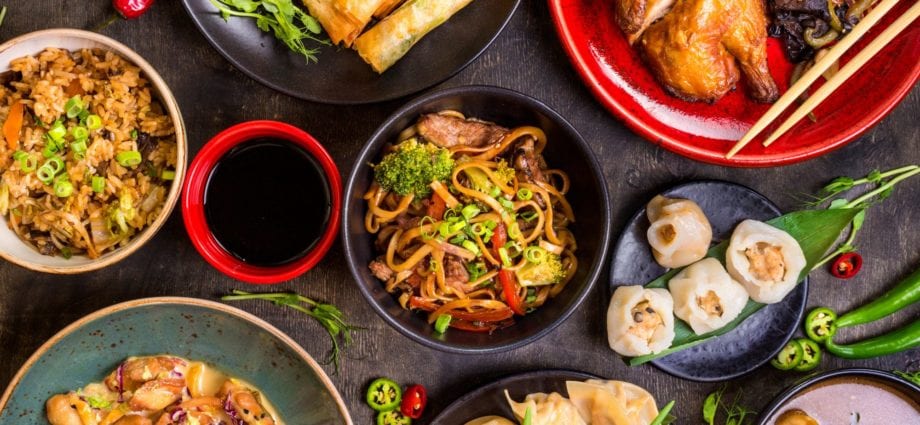I have been living in Singapore for two years now, and although the life of expats here is rather isolated, if you wish, you can learn a lot about local traditions, culture and cuisine. As you might guess, it is food that I research with particular zeal, and today I decided to talk about such a category of plants as green leafy vegetables.
Chinese leafy vegetables are not only very rich in nutrients, but they can also diversify your diet and taste experience. Some can be found in most supermarkets and can be prepared by yourself, while others are easier to order in Asian restaurants. These simple rules will help you choose and cook Chinese leafy vegetables:
- Buy only fresh greens of bright color without yellow and sluggish leaves and dark spots.
- Cut off the ends of the stems and pick off damaged or yellowed leaves.
- Wash, wash and wash again! This will remove fertilizer residues. Place vegetables and leaves in a large stainless steel or plastic bowl with cold water, shake, let sit for a while, then transfer to a large colander. Repeat the procedure two more times.
- Dry the greens: they should be damp, but not wet. Be sure to use vegetables within an hour or two after washing.
Here are the most common Chinese leafy vegetables.
Bok choi
This Chinese cabbage can be found in regular grocery stores, but more often they sell giant-sized bok-chu with white stems and large dark green leaves. They are older and slightly tougher than smaller vegetables, but still quite tender and sweet. It is good to chop such large cabbage for salads. However, for wok vegetable garnishes and other Chinese dishes, it is best to use a smaller bok-cho with fleshy light green stems. The recipe can be found in my app. By the way, my mother and some friends are quite successful in growing bok-choy in Russian summer cottages!
Chinese broccoli
This cabbage has long green stems with dark, thick leaves. Chinese broccoli is sweeter and much smaller than usual, the main thing is to choose one that has not too thick leaves and opened inflorescences. Before cooking, trim off the ends of the stems and peel the tough top skins from each stem, as if you were peeling asparagus. Chop the stems and add directly to the cooking dish: they will reach the desired state very quickly. You can cook them whole, with oyster sauce, for example.
Choi-sum, or yu-choi
This cabbage resembles Chinese broccoli, but much sweeter and more tender, the leaves are similar in texture to bok choy, they can be cooked as a side dish, stewed, added to soups, and fried. By the way, this vegetable is used for the production of oil.
Chinese water spinach
This long leafy, hollow-stemmed green vegetable is grown in water or moist soil. To prepare, cut the stems into thirds and season with garlic, fermented bean curd, or shrimp paste. Fresh spinach can also be eaten raw without cutting off the leaves. I can say that these greens are my favorite among Asian leafy vegetables.
Chinese spinach, or amaranth
The leaves of this spinach can be solid light green or bright crimson in the center. They taste like regular spinach, try frying them with garlic and tamari.
Chinese cabbage
This juicy, large vegetable has a very mild and sweet taste. It is used to make soups, salads, noodles, stir-fry. Choose firm heads of uniform color and cook immediately when you bring home from the supermarket!
Chinese celery
The stalks of Chinese celery are longer and thinner than usual, and probably not everyone will like their bright aroma and taste. If you’re ready to appreciate it, try making them a stir-fry.
Chinese mustard greens
The bitter taste of this healthy vegetable is paired with the spicy sweetness of ginger. Try pickled mustard cabbage.
Watercress
Once cooked, this vegetable has a mild flavor and makes an excellent side dish.
Pea shoots (leaves)
Large pea leaves are softer than small sprouts. Use them to prepare any Chinese food.
Edible clover
The leaves and stem of the edible clover have a sweet herbaceous flavor and cook very quickly. Buy it in restaurants, large stores and proven markets to avoid taking on a toxic, inedible look. Here, as with mushrooms: it is important to know which ones you can eat.
Edible chrysanthemum
In Chinese restaurants, there are two types of edible chrysanthemum: with small toothed leaves (usually stir-fry) or with rounded and wide thick leaves (they prepare not only stir-fry, but also in other ways).
Indian aster
This flowering herb is widely used in East Asian cuisine. Young leaves and stems harvested in early spring are considered a delicacy because of their special flavor.










